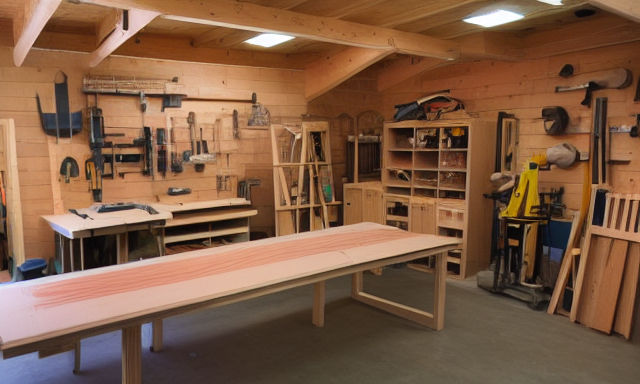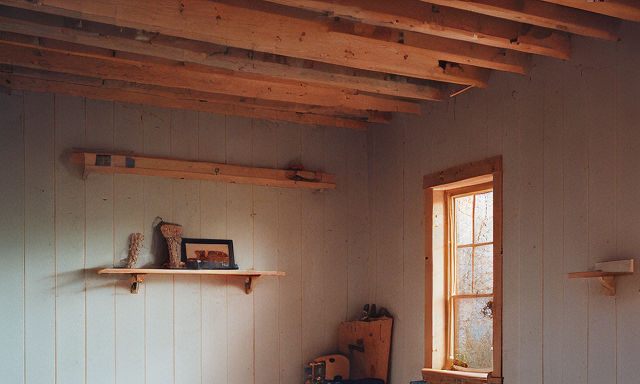DIY Wood End Table
Building a Simple DIY Wood End Table: Step-by-Step Guide
This guide will walk you through building a basic and stylish end table using common woodworking tools and materials.

Materials:
- (4) 2″ x 4″ boards, 8 feet long (or similar lumber)
- (1) 1″ x 4″ board, 8 feet long (or similar lumber)
- Wood glue
- Pocket hole jig (optional)
- 1 1/4″ screws
- Sandpaper (various grits)
- Finishing materials (paint, stain, etc. – optional)
- Wood filler (optional)
Tools:
- Miter saw
- Drill
- Jigsaw (optional)
- Sander
- Tape measure
- Pencil

Instructions:
- Cutting the pieces:
- Use the miter saw to cut the following pieces from the 2″ x 4″ boards:
- (4) legs at 28 inches long
- Cut the following pieces from the 1″ x 4″ board:
- (2) long side pieces at 18 inches long
- (2) short side pieces at 14 inches long
- (1) shelf at 16 inches long
- Use the miter saw to cut the following pieces from the 2″ x 4″ boards:
- Assembling the legs:
- Optional: If using a pocket hole jig, drill pocket holes into the ends of the long side pieces.
- Apply wood glue to the ends of the long side pieces and the bottom of one leg.
- Clamp the pieces together to form a right angle, ensuring the leg is flush at the bottom.
- If using pocket holes: Insert screws through the pocket holes and into the leg to secure the joint.
- If not using pocket holes: Drill pilot holes through the side piece and into the leg, then screw them together.
- Repeat this process to create the other side frame.
- Attaching the short side pieces:
- Apply wood glue to the ends of the short side pieces.
- Position the short side pieces between the long side pieces, creating a rectangular frame. The short pieces should be flush with the top of the legs.
- Secure the short side pieces with screws or pocket holes (depending on your chosen method).
- Attaching the shelf:
- Optional: Drill pocket holes into the underside of the shelf and the top of the frame.
- Apply wood glue to the top of the frame and the underside of the shelf.
- Position the shelf and secure it with screws or pocket holes.
- Finishing touches:
- Fill any screw holes or imperfections with wood filler (optional).
- Sand all surfaces of the table using various grits (starting coarse and working your way to finer grits) to achieve a smooth finish.
- Apply your desired finish (paint, stain, etc.) if you want to customize the look.
Tips:
- Double-check your measurements and cuts for accuracy before assembly.
- Pre-drill pilot holes to prevent wood from splitting when inserting screws.
- Use clamps to ensure a tight and secure fit during assembly.
- Consider adding decorative elements like rounded corners on the legs or shelf (using a jigsaw).
- This is a basic design, and you can customize it further by adding additional shelves, changing the dimensions, or using different types of wood.
Safety:
- Wear safety glasses and gloves when using power tools.
- Be mindful of sharp edges and take precautions to avoid cuts.
Here is a video tutorial demonstrating the building process for a similar end table:
Simple DIY End Table – YouTube: https://www.youtube.com/watch?v=8UWmJmFP-d0
Remember, this is a basic guide, and you can personalize it to match your style and skill level. Enjoy building your own end table!



